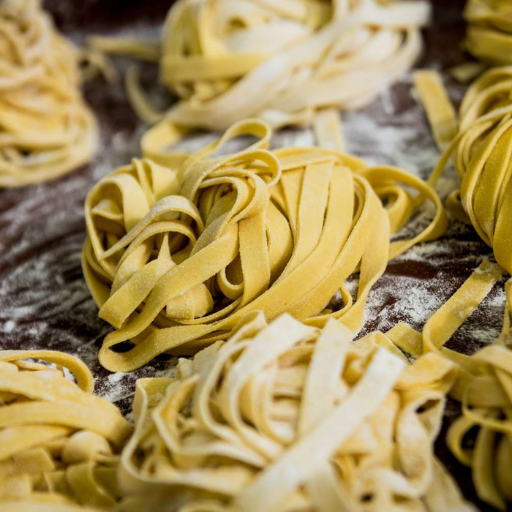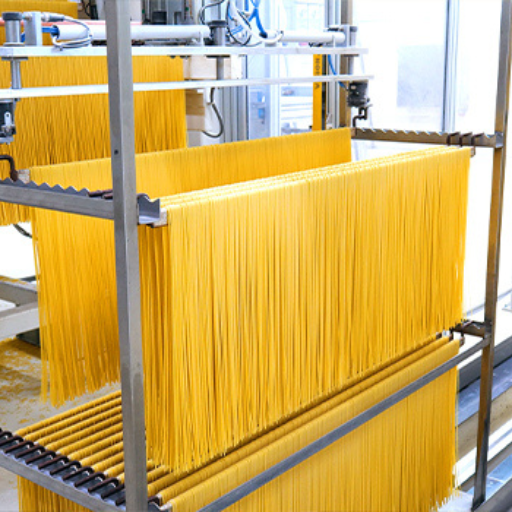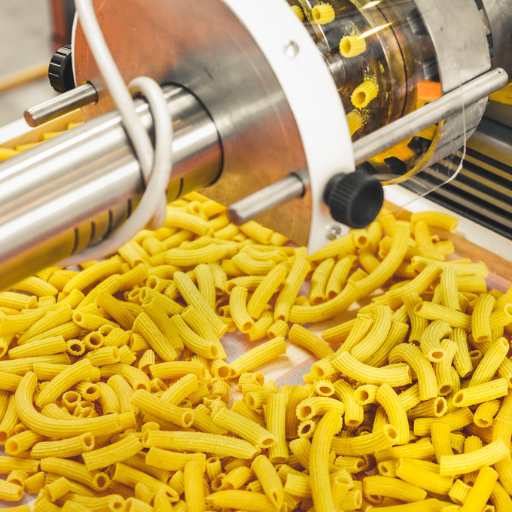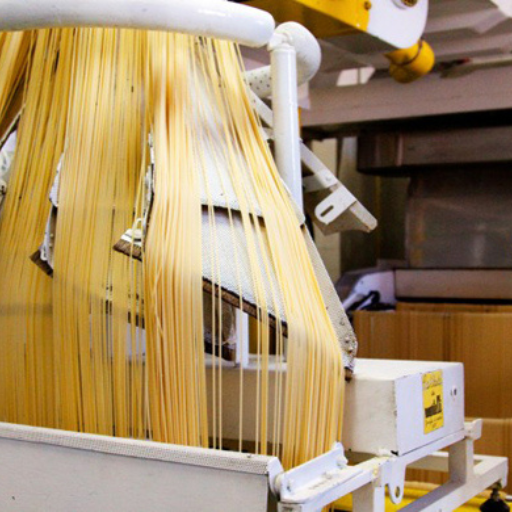Pasta, a staple in Italian cuisine, is much more than just a culinary delight; it stands as a symbol of cultural heritage and craftsmanship. As we delve into 2024, the landscape of pasta production in Italy showcases a fascinating blend of tradition and innovation. This article aims to provide readers with a comprehensive overview of the current state of the Italian pasta market, highlighting key trends, technological advancements, and economic factors influencing production. Whether you’re a food enthusiast, a market analyst, or simply curious about the journey of your favorite pasta from grain to plate, this exploration will equip you with valuable insights into the vibrant world of Italian pasta.
What is the History of Pasta in Italy?
Origin of Italian Pasta
Italian pasta originated from ancient times and its recipes are a manifestation of the Italian culinary history. The belief that Marco Polo brought it from China is widely spread; however, there has been evidence proving that the Italians had been cooking something similar even before he set out in his travels. The first mention of this pasta dish appears in Roman writings around the 1st century AD, where they called it “lagane”, which closely resembles today’s lasagna. Time and again, pasta underwent various transformations to become a staple food within the Italian peninsula. By the time of Middle Age, there were more improved pasta-making techniques hence leading to development of different shapes that we have today. In summary, these historical connections place pasta as a significant part of traditional Italian culture and lifestyle.
Traditional Methods of Making Italian Pasta
The traditional method applied by Italians when making past has taken many years to perfect. Basically, it only calls for two main ingredients; durum wheat semolina and water. Dough is carefully kneaded until it reaches appropriate consistency before being shaped into various forms required. In some parts of Italy, eggs are also added in some types like tagliatelle or fettuccine.
Different regions in Italy boast unique techniques and shapes for pasta shaping making the art itself unique for each region as well. For example, Southern Italy often make its homemade pasta using simple tools or with fingers to create orecchiette or cavatelli shapes while wooden molds or metal dies are often used in northern part for complex designs such as farfalle and trofie.
Drying ensures that cooked pasta maintains its shape and texture so this process is important. Traditionally, dried several days under natural air by spreading them under sunlight or inside airy rooms.The flavor and resistance can be well developed through this slow drying process.
Many small-scale artisanal pasta shops across Italy still value these old-fashioned techniques thus conserving the heritage of Italian pasta making. Employing them ensures that when you eat a piece of pasta, you are basically remembering centuries old knowledge and culinary traditions.
Development of Pasta within Italian Cuisine
The development of pasta in Italian cuisine shows its long history in terms of cooking. Pasta might have initially found its way to Italy through the ancient trade routes from Middle East. Early records indicate that people such as Etruscans and Romans were familiar with a type of food similar to pasta although it was actually in Sicily where the process of drying pasta was popularized. It is believed that by the 13th century, Marco Polo’s journeys had created a false notion that he introduced the food to Italy while Italian had already adapted it.
With durum wheat production becoming possible in Southern Europe, pasta became more accessible to different social classes during renaissance. The seventeenth century brought about significant changes with invention of extrusion methods paving way for various shapes as well. During the late 19th and early 20th centuries, Italians also moved out to America and other parts taking their recipes with them thereby globalizing their usage throughout Europe as well as beyond.
The traditional pasta is still celebrated in modern Italian cuisine, which embraces the modern innovations. The range of pasta dishes today is from those handed down through generations that have lasted for ages to innovative ones based on present gastronomic tendencies. This mainstay has always been at the heart and soul of Italian culture and food, epitomizing an amalgamation of olden days coupled with current times.
How is Pasta Produced in Italy?
The Harvesting and Processing of Durum Wheat
Durum wheat is an interesting crop because the way it is harvested and processed has a great effect on pasta quality. In spring or early summer, after full maturity of the grains, durum wheat which is high in protein and gluten is harvested. The wheat then goes through cleaning before being stored under controlled conditions to safeguard its quality.
After the harvesting process, durum wheat undergoes several stages of processing. The grains are initially milled into semolina using specialized mills. This process involves grinding the wheat into fine particles whilst maintaining a granular consistency required for a firm texture in pasta production. Water addition to semolina results to making dough which is kneaded, extruded through moulds that create different shapes of pasta. Finally, shaped pastas are dried at optimum controlled temperatures to make them ready for cooking.
From Semolina to Dough: The Pasta Factory Process
There are precise steps that have to be followed when transforming semolina into dough at a pasta factory for it to produce high-quality products. Water and semolina combine in large mixers first; thereafter the mixture should be kneaded well until gluten structure develops which gives dough an elastic property. Consequently this procedure requires close monitoring of hydration levels so as not affect final product’s texture and cooking properties.
Shape formation of the dough involves pushing it through extrusion machines with bronze or Teflon dies producing varieties like spaghetti, penne, fusilli among others.Bronze dies create rougher surfaces enabling sauce absorption into the pasta while Teflon dies make a smoother surface.At this point drying takes place under carefully regulated temperature and humidity such that no cracks appear as well as uniform drying. Subsequently packaging is done before these types of pasta can be sent out keeping its state from factory up to consumers’ tables.
Different Methods in Making Dry And Fresh Pasta
Dry and fresh pasta have very distinct ways of preparation where each has its own procedures and ingredients used.
Dry Pasta:
Dry pasta is basically made from durum wheat semolina and water. To begin with, the semolina is mixed with water to make a stiff dough. This dough after kneading becomes gluten developed for drying structure of the dough itself; then it can be extruded through any dies for creating various shapes of pasta. The shaped pasta will then dry at low temperatures for quite a long period of time, even days in some cases. Through this drying process moisture is removed from it ensuring that it reaches consumers without need for refrigeration since it can stay longer.
Fresh Pasta:
Usually fresh pasta is made using softer wheat flour and water inclusive of eggs as well.The dough should be mixed until it attains smooth and elastic texture. Instead of going through prolonged drying, this dough is simply rolled out thinly and cut into different shapes either by hand or using a pasta machine. Fresh pasta has more moisture content and a soft texture hence must be kept in coolers to prevent spoilage. It’s usually cooked just after been made that is within few hours mostly but not always so as to keep it fresh.
While dry pasta offers the convenience of storage over long periods as well as fast cooking options, fresh pasta on the other hand is treasured due to its supple consistency and full-bodied flavor giving it an exclusive taste experience.
What are the Key Statistics on Italian Pasta Production?
Total Pasta Production: Million Tonnes Per Year
Italy is one of the biggest pasta manufacturers on the planet, with substantial production every year. As per recent available figures, Italy produces about 3.5 million tonnes of pasta annually, being the largest global producer of pasta by far in terms of volume. This reflects its deep culinary roots and commitment to quality in pasta making as a whole. The love for Italian pasta that pervades both domestically and internationally continues to boost production levels thereby ensuring Italy’s supremacy in this global market.
Export and Import Trends in the Italian Pasta Market
Just like for other commodities, exportation forms an important part of pasta industry; a huge proportion of it is destined to international markets. According to latest industry reports, about 60% of total Italian pasta output is exported abroad. Major destinations include Germany, USA, France, UK and Japan among others; nations which have a high demand for genuine Italian pastas thus adding up much into the country’s export revenues.
In contrast, Italy imports relatively small amount of noodles mainly because some types and varieties are not produced locally. For instance, imported noodles serve as complements to domestic extensive variety some niche markets or specialty foods that employ unusual ingredients unfamiliar to conventional Italian pastas.
The export-import trends illustrate that Italy’s positioning globally has been influenced by quality production along with overseas consumers’ interest in this nation’s gastronomy. The dynamic interplay between exportations and importations supports leading positions within global market shared by Italy on the one hand while maintenance internal equilibrium on another.
Consumer Trends: Amount of Pasta Per Italian Per Year
On average Italians consume approximately 23-25 kilograms per capita/year (about 50-55 pounds) of pasta products. Such rate of consumption is an indicator how deeply rooted is culture when talking about consumption habits because people perceive it at tradition level., where it remains a staple food item in everyday diet Italians have many preferences when it comes to pasta in any form and recipe, showing the country’s rich culinary heritage, which has a considerable regional diversity. This consistency in high consumption figures is an indication of continuous home market demand as well as passion towards this food that blends well with Italy having large production volumes and significant exports.
How Does Italian Pasta Compare to Other Countries?
Quality of Italian Pasta vs. Global Standards
Pasta was made in Italy and it is considered to be the top quality pasta globally primarily because of its rich culinary tradition and strict quality control measures. Many other countries produce pasta, but none of them can compare to Italy’s commitment to high-quality ingredients like the use of 100% durum wheat semolina. There are numberless reasons why this excellence is maintained including its texture that leads consumers to prefer it worldwide.
Italian pasta manufacturing also follows strict regulations governed by certifications such as Denominazione di Origine Protetta (DOP) and Indicazione Geografica Protetta (IGP). These certifications are meant for products whose production processes adhere to traditional methods within specific regions hence maintaining their authenticity. On the other hand, not every other country’s pasta is always as rigorously regulated, thus they might differ in terms of taste or quality sometimes.
Additionally, technology advancement is evident in Italy’s pasta business while maintaining traditional practices as well. It implies the stable levels of quality that deem Italian pasta internationally competitive at all times. In contrast with these countries, others emphasize on quantity than lackluster quality thereby creating gaps between the different types pastas they make. As a result, it continues to be unrivaled concerning its superiority and global recognition.
Italy’s Position in the World Pasta Market
Italy takes a commanding position when it comes to global market share for pasta and has over time become synonymous with pasta itself; this is due to its consistence as biggest producer/exporter per annum worldwide . According to recent data provided, this country produces about 3.5 million tons of spaghetti which accounts for significant part of overall production globally. This dominance has been further strengthened by a firm commitment towards good taste coupled with protective measures ensuring originality among all kitchens around us in an effort aimed at portraying Spaghetti as indigenous.
This is further emphasized by the fact that more than half of the country’s pasta production is consumed by international markets. Major export destinations for Italian pasta include the United States, Germany and France where its taste and texture are highly treasured. The success of Italian pasta industry relies on strong branding and marketing campaigns that emphasize traditional recipes, premium ingredients, and geographically authentic origins.
Moreover, there are household names like Barilla De Cecco La Molisana in Italy which stand out amongst others due to their constant quality and heritage. These firms together with other smaller food processors remain a key part of Italy’s prestigious recognition in global noodle market. In addition to that it maintains its leadership position within the world pasta market since it blends traditions with innovations while maintaining stringent quality standards.
Comparing Varieties: Italian Pasta vs. International Pasta
When comparing Italian with other international types of pastas, some differences can be mentioned. For example, Italians make their pasta using traditional methods hence; they use durum wheat semolina that makes it hard when cooked and contains a distinctive taste. Many Italian producers dry their pastas slowly after cutting them with a knife having rough surfaces unlike others who smoothen them through different techniques as well as drying them quickly.
In contrast, there are many international varieties such as those available in Asian markets or produced by U.S companies which would utilize diverse ingredients including rice flour or soft wheat among others. This may result into either an entirely new texture or even a change in flavor profile altogether; for instance American spaghetti is likely to be enriched with vitamins plus minerals but has polished surface whereas Ashan noodles differ quite markedly from one another because they can have different tastes and textures depending on whether they were made from eggs or what type of starch was employed.
Cooking methods also differ; Italian pasta is usually cooked “al dente”, leading to a firmer bite as compared to other cultures, which may like their pasta or noodles softer or even slightly chewy, as reflected in dishes such as Pho or Ramen. Ultimately, when it comes to types of pastas people prefer, they are guided by cultural traditions and personal preferences but this continues to make Italian pasta distinct globally because of its commitment to quality and authenticity.
What are the Different Types of Pasta in Italy?
Famous Varieties: Spaghetti, Macaroni, etc.
In Italy, pasta is sold in various shapes and sizes for the different sauces and cooking purposes. I personally think that spaghetti and macaroni are some of the most popular and versatile pasta types especially if I want to try out new Italian cuisines. For lighter tomato-based sauces, spaghetti with its long thin strands is perfect while macaroni, which are short curved tubes, fit well into heavy dishes like mac and cheese. Other common varieties include penne, which has a ridged tube shape that goes well with thick creamy sauce; fusilli is also another variety of pasta shaped like corkscrew that effectively picks up pesto or meat sauce. These differences make it an interesting adventure of flavors and textures when eating Italian food.
Artisan vs. Industrial Pasta Production
Understanding the difference between artisan and industrial pasta production can go a long way towards appreciating Italian cuisine better. Artisan pasta is traditionally made by hand or using minimal machinery so as to retain quality ingredients like those found locally whereas large scale operation relies on advanced machines for industrial production. By producing little quantities at a time this ensures attention to details as well as preservation of traditional processes often used by such producers. On the other hand, there exists industrialized means of manufacturing pasta where sophisticated machines are used to make huge amounts of it. This helps in maintaining uniformity as far as quantity is concerned but conditions like high-speed drying may be preferred thereby affecting texture or taste of a given type of noodles due to utilization of non-standard ingredients during processing. In my opinion artisan pasta seems more real and rewarding because it has unique qualities unlike industrially produced ones whose flavor appears flat.
Nutritional Profile of Different Pasta Types
It is important to understand that all pastas differ nutritionally when comparing their nutritional profiles. Whole wheat noodles for example have higher fiber content compared to normal white flour noodles, making them slightly lower in calories. This could facilitate digestion and satiety feeling. Conversely, gluten-free pasta made from rice, quinoa or legume flours targets consumers with celiac disease or those looking to increase the protein and micronutrient content of their meals. However, they may taste different and have unique textures that one needs time to get used to them. Besides, enriched pasta which is commonly found in stores has additional nutrients like iron or B-group vitamins such as folic acid for instance. Each type has various nutritional advantages based on individual dietary requirements and choices.
Frequently Asked Questions (FAQs)
Q: How is pasta made in Italy?
A: In Italy, the way of making pasta is like a fine art. Conventional pasta is made from dough that doesn’t contain yeast with simple ingredients including flour and water or eggs for more taste. This dough is then kneaded until smooth and left to stand before being rolled out and cut into the desired shape.
Q: What are some insights into the Italian pasta market in 2024?
A: The Italian pasta market still booms according to Eurostat and Statista as production increases significantly even though people continue consuming more pasta in 2024. The per capita consumption of pasta remains high while Italy itself produces about 6.1 million tons of it annually, making it the highest producing country. Demand for freshly produced pastas and traditional recipes remains strong.
Q: Can you provide a transcript of the process of making pasta?
A: Yes! A detailed transcript on how Italians traditionally make their own pasta takes us right through choosing high quality flour; mixing and kneading dough; resting; cutting final portions plus drying them off. This attention to detail helps ensure that any sauce can have a perfect match in terms of taste and texture with the acquired flavor.
Q: What specific pasta dishes are popular in Italy?
A: Numerous types of unique tasting Italian dishes prepared using different types of pastas exist. Carbonara, which uses eggs, cheese, pancetta, pepper as ingredients, is one such example . Another well known dish includes Pappardelle al Ragù which consists wide ribbon noodles served with hearty meat sauce underneath them. Also fresh ingredients are used largely for cooking pastas as per traditional Italian cookery.
Q: How has pasta consumption changed over the years?
A: Pasta consumption has remained an integral part of Italian food culture throughout time. There has been an increase over years per capita eating volumes for this type of cuisine constituting several kilograms taken by Italians annually. According to 2022 statistics, pasta is continuously gaining more popularity both in Italy and abroad.
Q: What makes Italian pasta unique compared to pasta in the world?
A: The secret behind the absolute finesse of this Italian pasta is due to its traditional cooking techniques, the quality of flour and water as well as the vast range of sizes and shapes that exist. This texture allows sauce to stick making every bite flavorful thus leading to a good taste. In addition, it has been observed that Italians have a preference for freshly made pastas, which add on to their overall flavor and genuine nature.



















